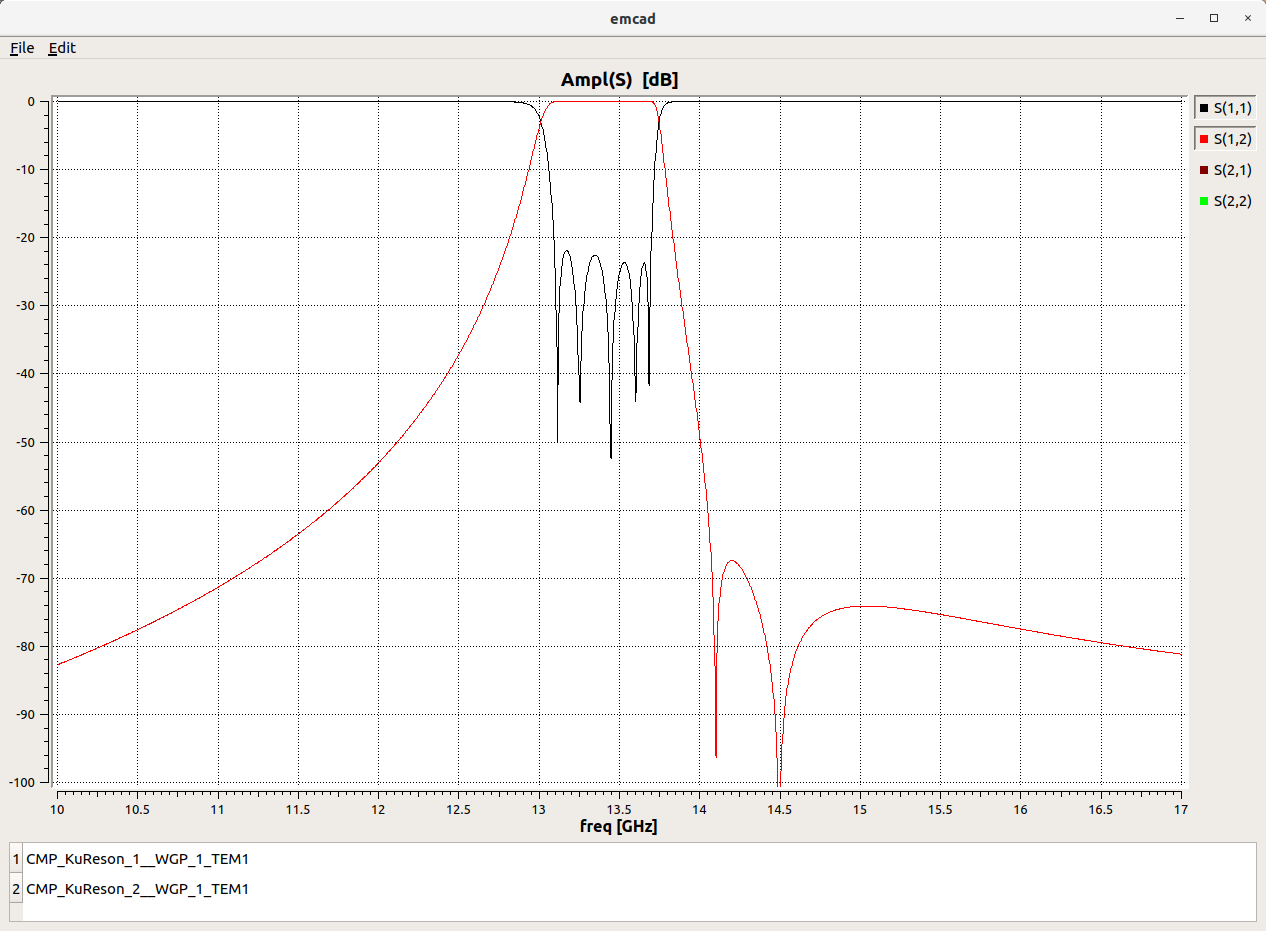Hierarchical Electromagnetics
EmCAD – Cloud-native EM Simulator for Circuit-Level Modeling
Filter Design
The EmCAD design environment is very well suited for the design of microwave filters.
The equivalent circuit generated by the Hierarchical Electromagnetic Modeler may be exploited
for the computation of the complex pattern (in the Laplace plane) of transmission and reflection
zeros associated with a microwave filter. The computation of these data is a unique capability of the
EmCAD software which is not matched but any other electromagnetic solver available on the market.
The pattern of transmission and reflection zeros is a very useful information because
the comparison of the zeros associated with the electromagnetic model and the ideal
circuit is a good measure of the error associated with the microwave implementation.
This kind of comparison is much more helpful than the comparison between the frequency
responses because the zeros patterns have a finite size and are in a one to one relationship
with the electrical parameters associated with the ideal filter circuit.
In fact from the zeros patterns (plus an additional constant) it is possible to compute an
equivalent circuit which has the same topology as the ideal circuit and the electric response
of the microwave structure. In the following this circuit will be denoted as the mapped circuit.
The EmCAD design environment provides a set of tools which, for a limited class of
filter topologies, allows to perform the design and tuning of a microwave structure in a
short time and a in an efficient manner.
A first tool is aimed to the generation of an ideal circuit that meets the electrical
specifications of the filter.
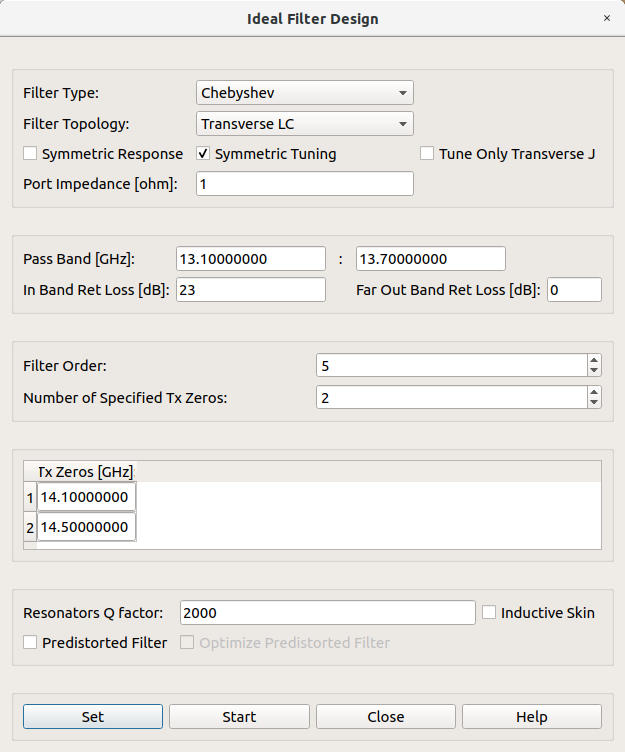
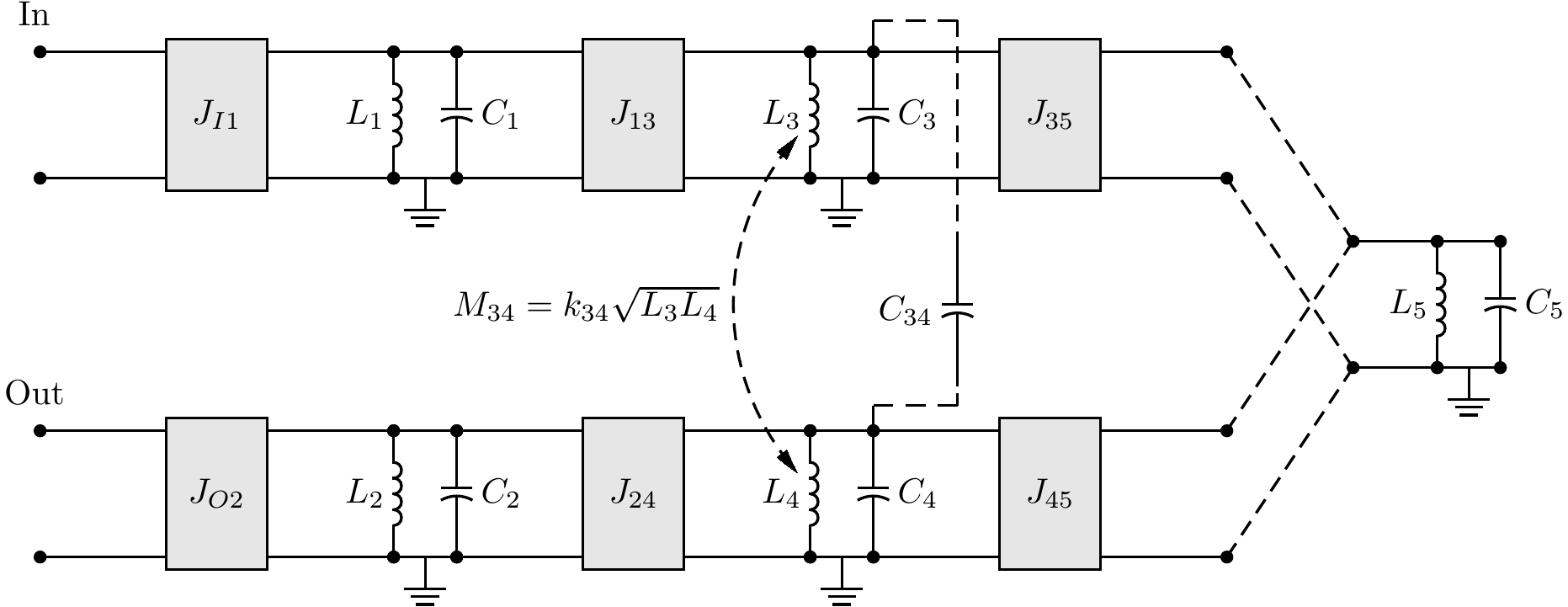
The frequency response of the ideal filter circuit may be analyses and plotted:
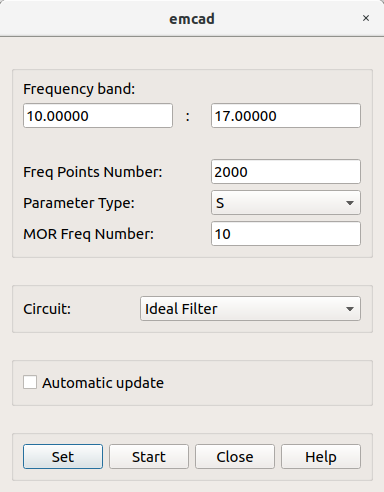
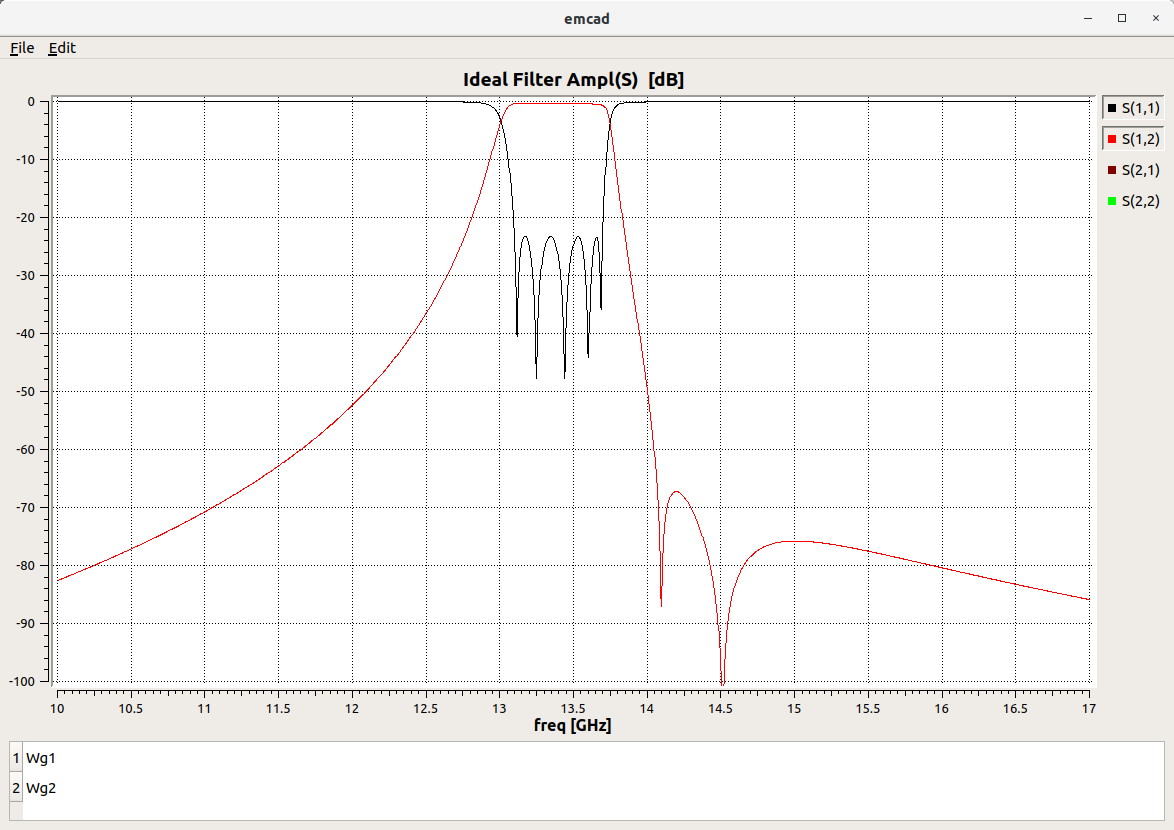
Other tools address the computation of the Transmission and Reflection Zeros of the microwave filter and,
from these data, the computation of the mapped circuit.
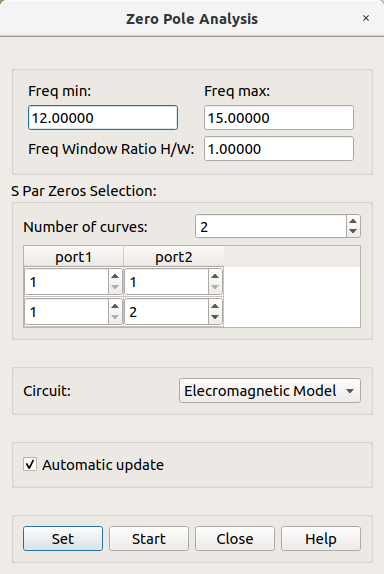

The comparison of the numerical parameters associated with the mapped and ideal
circuits is very powerful diagnostic tool which may be exploited in the design a tuning of
the electromagnetic structure.
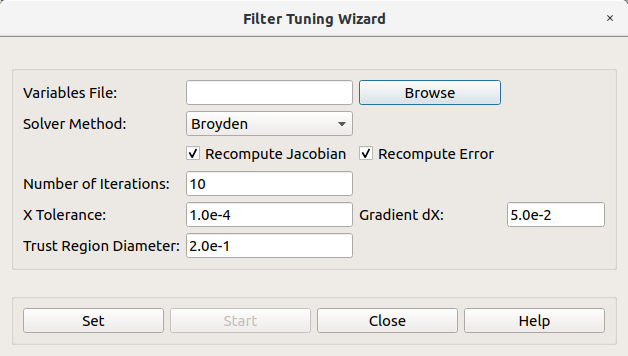

When the tuning procedure has converged the electrical response of the electromagnetic structure should be close to the ideal one:

